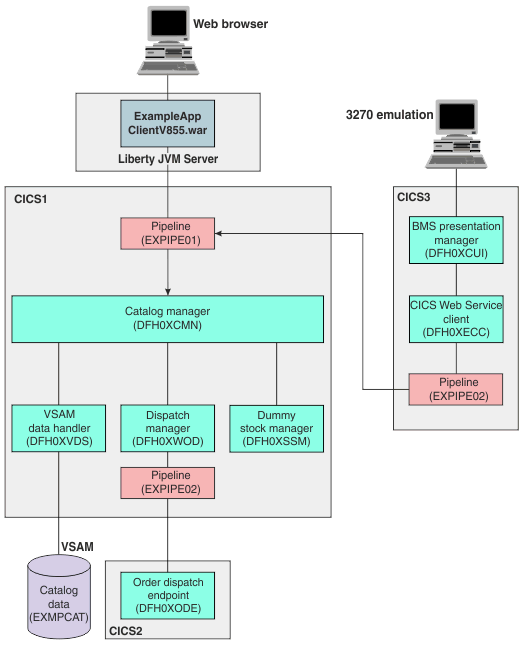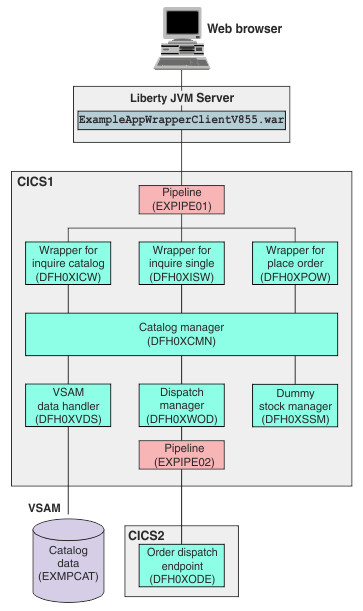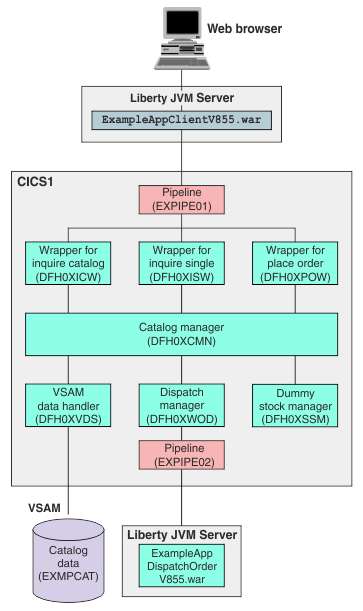Web service support for the example application
The web service support extends the example application, providing two Java versions of a web server front end client, and a Java and COBOL version of the web service endpoint for the order dispatcher component.
| File | Description |
|---|---|
| ExampleAppClientV855.war | Web service front end client to catalog manager |
| ExampleAppWrapperClientV855.war | Web service front end client to web service wrappers |
| ExampleAppDispatchOrderV855.war | Order dispatch web service provider application |
<feature>jaxws-2.2</feature>Figure 1 shows a configuration of the example application with one version of the web client front end and CICS service provider as the order dispatch web service end point. It also includes a web service client on a CICS system.

- A web browser client connected to Liberty JVM server, in which
ExampleAppClientV855.Waris deployed. - CICS web service client DFH0XECC. This client uses the same BMS presentation logic as the base application but uses module DFH0XCUI instead of DFH0XGUI.
Figure 2 shows another version of web client front end, with CICS service provider as the order dispatch web service end point.

In this configuration, the web browser client is connected to Liberty JVM server, in which
ExampleAppWrapperClientV855.war is deployed. In CICS, three wrapper applications (for the inquire catalog, inquire single, and place order
functions) are deployed as service provider applications. They in turn link to the base
application.
- Outbound WebService? to YES
- Outbound WebService URI to the URI where the Dispatch Order end point is being deployed on, e.g.
http://cics2:8080/exampleApp/dispatchOrder
Figure 3 shows a configuration of the example application with both of the web client front end and the order dispatch web service end point on Liberty JVM server.

In this configuration, the web browser client is connected to Liberty JVM server, in which ExampleAppClientV855.war is deployed. The order dispatch web service end point ExampleAppDispatchOrderV855.war is installed on Liberty JVM server.
In order for Dispatch Manager on your CICS system to call this end point, you need to change the following configuration using the ECFG configuration transaction
- Outbound WebService? to YES
- Outbound WebService URI to the URI where the Dispatch Order end point is being deployed on,
e.g.
http://mylibertyserver:9080/ExampleAppDispatchOrderV855/DispatchOrderFor further details on setting up the example application, see Configuring the example application.